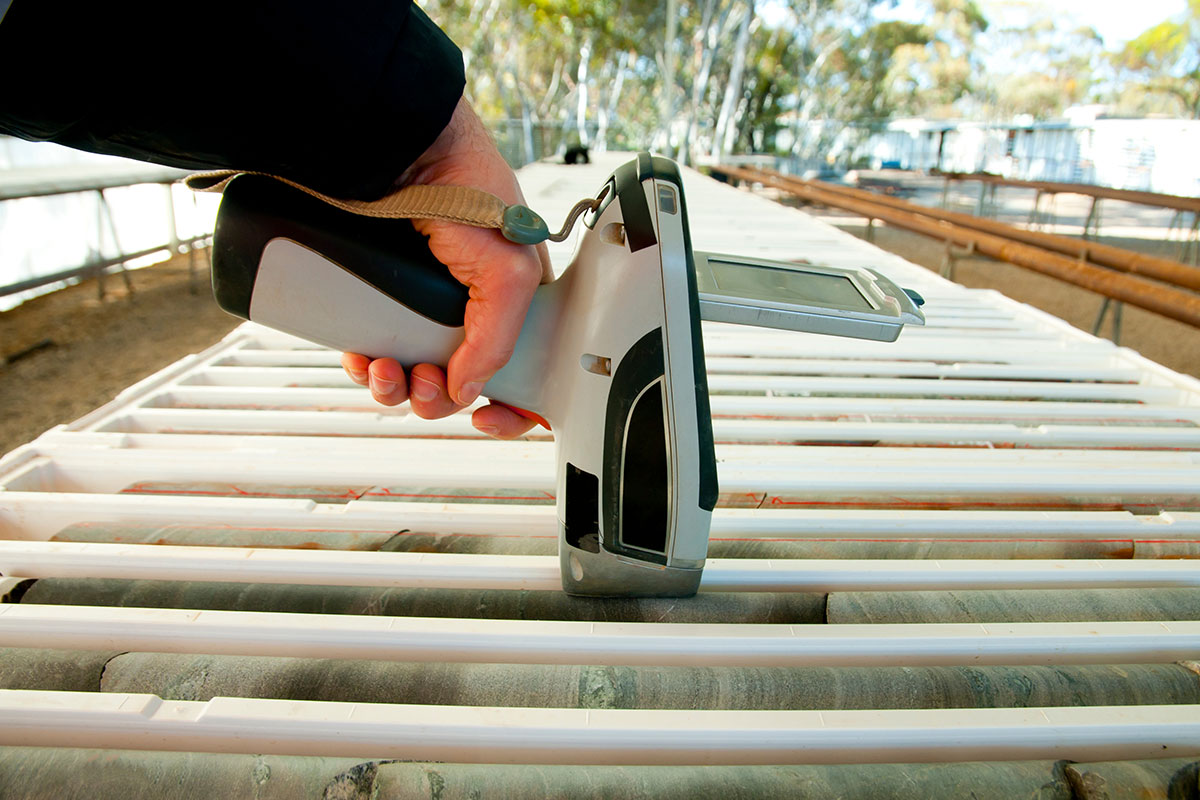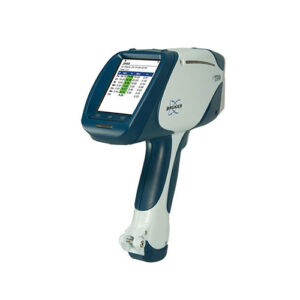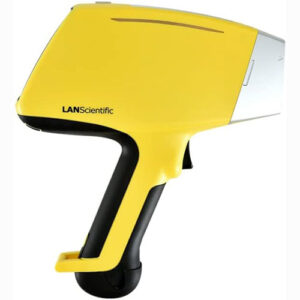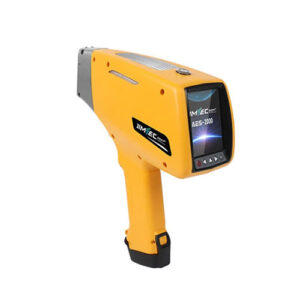If you buy through affiliate links, we may earn commissions, which help support our product reviews.
Last Updated Jan 26, 2024
Are you considering handheld XRF analyzers for your professional or research needs? Handheld X-ray fluorescence (XRF) precious metal analyzers are becoming increasingly popular among professionals and researchers as they provide an accurate, fast, and cost-effective way to analyze the chemical composition of materials.
In this article, we will look at some of the top handheld XRF guns you can buy on Amazon and offer a buyer’s guide to help you select the right one for your unique project, especially if you’re focused on an XRF analyzer for gold testing.
Are you in a rush? Here’s a quick preview of the 3 XRF guns we tested:
Quick Preview: Top 3 Handheld XRF Analyzer Guns
| Product Name | Review | Price | Our Rating |
|---|---|---|---|
Bruker S1 Titan 800 Handheld XRF Analyzer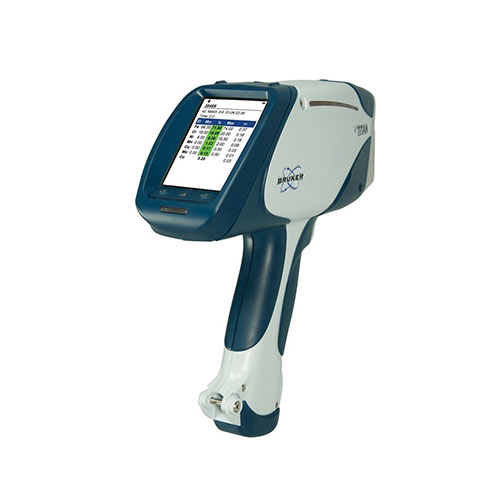 | Jump to Review | Get Quote | 4.8 stars |
LANScientific TrueX Gold Series Handheld XRF Gun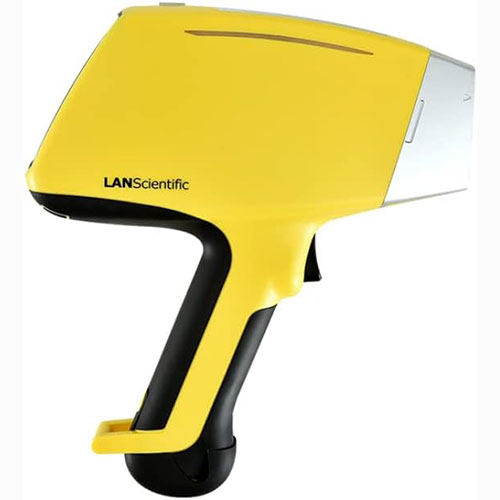 | Jump to Review | Check Price | 4.6 stars |
JimTec Hand-held XRF Spectrometer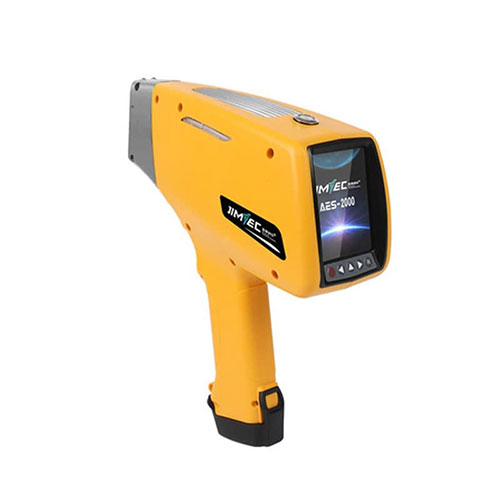 | Jump to Review | Check Price | 4.7 stars |
Table of Contents
Understanding the Basics of Handheld XRF Analysis
X-ray fluorescence spectrometers are instruments used to determine the elemental composition of materials, including light elements and more complex compounds found in electrical and electronic equipment.
Here’s a breakdown of how an XRF analyzer works and its applications:
Principle of Operation:
When a material gets exposed to X-rays from an X-ray tube, the atoms in the material can absorb this energy and become temporarily excited.
As the atoms return to their ground state, they emit secondary X-rays, known as fluorescence, directly resulting from interacting with the X-ray tube.
Each element, including light elements, has a unique atomic structure, so the energy of the emitted X-rays is characteristic of that element.
The presence and concentration of elements in the sample, especially light elements, can be determined by measuring the energy and intensity of these emitted X-rays.
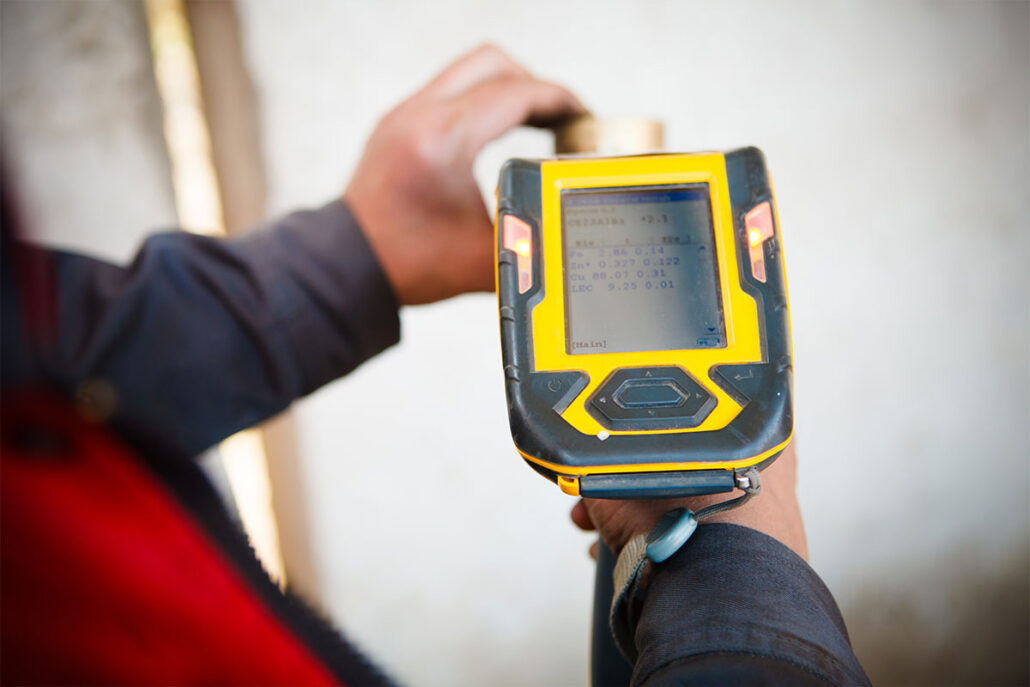
Components:
- X-ray Tube: The X-ray tube is responsible for producing the primary X-rays which stimulate the atoms within the sample.
- Detectors: Capture the emitted X-rays from the sample and convert them into electronic signals.
- Filter: Helps refine the X-ray beam to target specific elements or ranges of elements.
- Software: Analyzes the electronic signals to determine the sample’s elemental composition.
Common Applications for Handheld XRF Analyzers Include:
While there are many applications for handheld XRF analyzers, some of the most common include:
- Environmental Analysis: Measure heavy metal levels and trace elements in soil.
- Quality Control: Used in industries like metallurgy, electronics, and petrochemicals to ensure the quality of products.
- Environmental Monitoring: Helps detect and measure soil, water, and air pollutants.
- Archaeology: Assists in determining the composition of ancient artifacts, which can provide insights into historical trade routes, technologies, and more.
- Mining: Used to assess the mineral content of rock samples quickly.
- Art and Jewelry: Help verify the authenticity and composition of artworks and jewelry.
- Forensics: Assists in crime scene investigations by analyzing trace evidence.
- Scrap Metal Recycling: Analyzes scrap metal for the presence of valuable elements.
As technology advances, portable XRF analyzers’ applications are expanding.
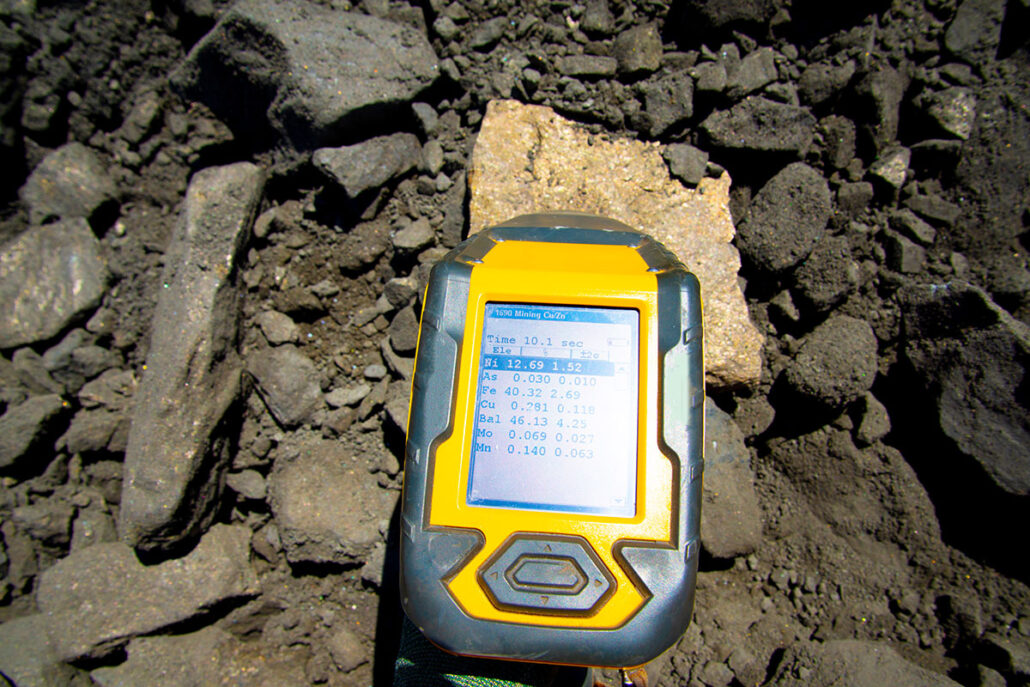
Advantages of Using a Handheld XRF Analyzer:
There are several advantages to using a handheld XRF analyzer over traditional lab-based methods, including:
- Non-Destructive: Samples are not damaged or altered during analysis.
- Portable: Many modern XRF analyzers are handheld, allowing for on-site analysis, similar to the convenience of the best handheld GPS for hiking.
- Fast Results: Provides rapid results, often in a matter of minutes.
- Versatile: Can analyze various materials, from liquids to solids and thin films.
When choosing an XRF analyzer for gold, these benefits become particularly important as they ensure that precious samples are not destroyed, and accurate results can be obtained quickly in any location.
Limitations of XRF Analyzers:
While there are many advantages to using a handheld XRF analyzer, it’s essential to understand its limitations. These include:
- Sensitivity: Handheld XRF analyzers may not detect elements at low levels compared to lab-based methods.
- Surface Sensitivity: Handheld XRF analyzers may only analyze the surface layer depending on the material.
- Compositional Range: The composition range that can be analyzed depends on the specific instrument and its calibration.
In summary, an XRF analyzer is a powerful tool for elemental analysis across various fields, offering quick, non-destructive testing with high precision.
Now, look closer at the top 3 handheld XRF analyzer guns on Amazon and help you find the best one for your needs.
In-Depth Reviews: Top 3 Handheld XRF Analyzer Guns
Bruker S1 Titan 800 Handheld XRF Analyzer
Base Price: Get Quote
Screen: 640 x 480 touchscreen
Accuracy: 0.05%
Application: Portable Elemental Analysis
Weight: 3.3 lbs
Features & First Impressions:
The Bruker S1 Titan 800 Handheld XRF Analyzer is a remarkable fusion of lightweight design and precision technology. Weighing just 3.3 lbs., including its battery, it’s an incredibly portable device.
Our first experience highlighted its rugged build, designed to withstand humid and dusty environments, making it suitable for field applications.
The device features a high-performance graphene window silicon drift detector (SDD) that ensures superior count rates and resolution, enhancing its analytical capabilities. Furthermore, it is equipped with a 50 kV X-ray tube and offers Wi-Fi and USB connectivity, indicating its modern and versatile approach to data management and transfer.
Pros
- Exceptional Portability
- Advanced Detector Technology
- High X-ray Tube Voltage: 50 kV tube
- Robust and Durable
- Wi-Fi and USB Connectivity Options
Cons
- High Cost
Performance & Overall Experience:
Performance-wise, the S1 Titan 800 is a powerhouse in handheld XRF analyzers. Its fast analysis speed, coupled with its high resolution and superior count rates, significantly enhances the efficiency and reliability of on-site material analysis.
The user-friendly interface and diverse calibration options, ranging from alloys to precious metals and soil, provide a wide application spectrum.
Our overall experience with the S1 Titan 800 was highly positive, marked by its ease of use, accuracy, and the confidence it instills in decision-making processes. See our full review of the Bruker S1 Titan 800.
Tested Features:
- Lightweight and Portable Design
- Graphene Window SDD Efficiency
- 50 kV X-ray Tube Performance
- Rugged Build Quality Assessment
- Wi-Fi/USB Connectivity Utilization
- Quick Analysis Speed Verification
- Versatile Material Calibration Testing
LANScientific TrueX Handheld XRF Analyzer for Gold
Price: Check Price
Screen: 4.3-inch touchscreen
Accuracy: Can reach 0.05%
Application: Precious Metals
Weight: 3.5 lbs.
Dimensions: 254 x 79 x 280 mm
Features & First Impressions:
The LANScientific TrueX Gold Series Handheld XRF Gun packs an impressive suite of features into its compact design. Beyond its easy-to-navigate 4.3-inch touchscreen, this analyzer boasts a detection capability superior to traditional methods like tin gold assay and nickel matte gold assay, promising greater accuracy in elemental analysis.
Notably, it stands out with its built-in DoubleBeam technology that can non-destructively analyze the elemental content of various materials, including precious metals and gold-plated samples.
There’s also a perk in its detectable range, extending from Mg to U.
Upon our first use, we were immediately struck by its efficiency, delivering results in significantly shorter detection times. Its portability was also highlighted – perfect for on-the-go applications across industries like jewelry manufacturing, recycling, and electronic devices.
It’s clear that LANScientific has raised the bar for XRF analyzers with the TrueX Gold Series.
Pros
- Superior detection accuracy
- Non-destructive elemental analysis
- Fast result delivery
- Portable for varied applications
- A wide range of detectable elements
Cons
- Higher cost compared to similar competitors
Performance & Overall Experience:
The TrueX Gold Series truly excelled in performance during our testing phase. The device demonstrated unparalleled precision when identifying and analyzing the elemental content of various samples, significantly surpassing the accuracy of traditional methods. Thanks to its DoubleBeam technology, it provided non-destructive analysis with a detection range from Mg to U, ensuring no sample was damaged during the testing process.
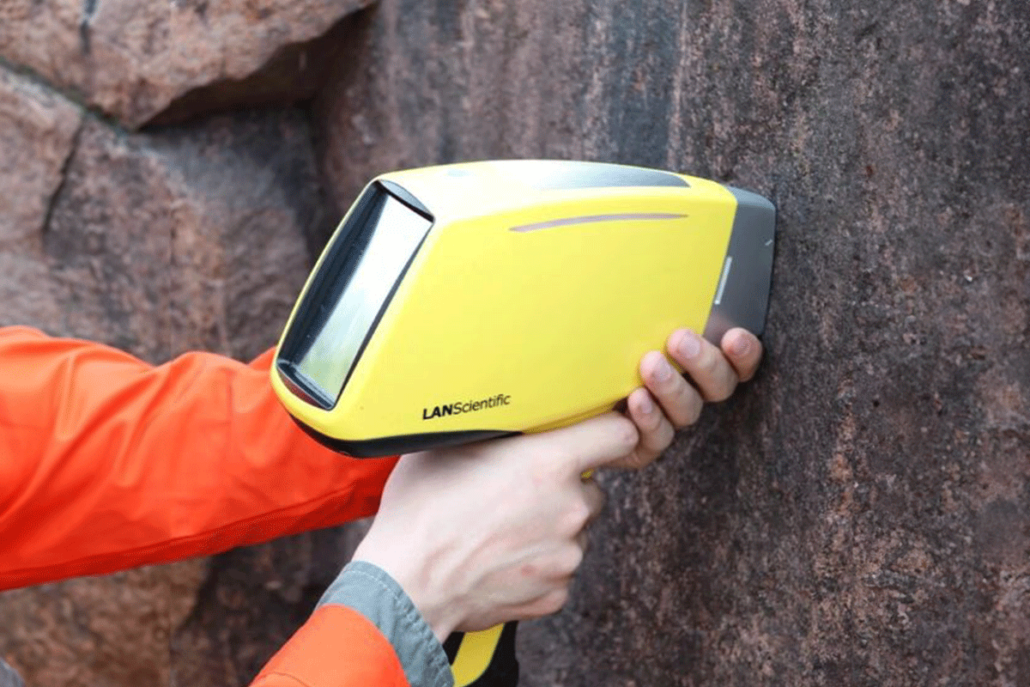
The gold series also delivered results in a remarkably short timeframe, making it an ideal tool for industries requiring rapid analysis.
- Performance: The TrueX Gold Series Handheld XRF Gun proved its worth in terms of performance, delivering highly accurate results consistently. Whether we tested precious metals, non-precious alloyed metals, or gold-plated samples, the results were always precise and reliable.
- Speed: The device yielded results in a much shorter time compared to other XRF guns we’ve tested, showcasing its efficiency.
- Portability: Its compact design allowed for easy transportation, making it feasible for various on-site applications.
- User Experience: The 4.3-inch touchscreen was user-friendly and easy to navigate, making the whole process of testing and analyzing more streamlined. The device also proved its durability through extended usage, exhibiting no indications of damage or deterioration.
Our experience renting the TrueX Gold Series Handheld XRF Gun was overwhelmingly positive. It combines high performance, efficiency, and user-friendliness in one rugged, compact package, making it a valuable tool for any professional requiring precise elemental analysis.
Tested Features:
- Detection Accuracy
- Analysis Speed
- Portability
- Usability
- Durability
JimTec Hand-held XRF Spectrometer
Price: Check Price
Screen: 3.5″ TFT industrial touchscreen
Accuracy: 0.05%
Application: Precious Metal Detection
Weight: 3.3 lbs.
Dimensions: 245x250x90mm (L x W x H)
Features & First Impressions:
The JimTec Handheld XRF Spectrometer, one of the leading portable analyzers on the market, comes packed with features that make it stand out. Its compact, lightweight design and waterproof housing make it convenient for on-site non-destructive analysis. Such an analysis has numerous benefits, ensuring that samples remain intact and unaltered.
When X-rays interact with a sample, they can excite inner shell electrons, leading to the emission of secondary X-rays that the device then measures. This is particularly useful for detecting toxic elements in various samples.
Safety is paramount, with built-in protective measures ensuring user and environmental protection.
Its accuracy and speed were impressive, providing precise results in a remarkably short time.
The analyzer also boasts a Peltier cooling system, enhancing stability and broadening the detection limit.
One of the most noteworthy features of these portable analyzers is their considerable data storage capacity. The 2GSD onboard storage can hold up to 400,000 data entries and supports data transmission via USB 2.0, Bluetooth, and GPS, a boon for data management.
(To learn more about how GPS works in this application, click here).
Our first impression: this device is a game-changer in the field of non-destructive metals elemental analysis.
Pros
- High precision and quick results
- Large onboard storage capacity
- Supports multiple data transmission modes
- Compact, lightweight, and waterproof
- Built-in safety measures
Cons
- Pricey for small-scale users
Performance & Overall Experience:
For a week, we rented the Handheld XRF Spectrometer from Jimtec and put it to the test.
Its compact and lightweight design made on-site analysis a breeze, consistently delivering rapid and precise readings. The impressive digital multi-channel technology enhanced detection limits and ensured stability across various application fields.
Despite a brief encounter with rain, the device’s waterproof feature proved invaluable, ensuring uninterrupted work. The long standby time minimized charging interruptions, and the seamless data storage and transmission capabilities, mainly the Excel export, streamlined our data analysis process.
Overall, our experience with the XRF gun was highly satisfactory, marking it as a top contender for future investments.
Tested Features:
- On-site composition identification
- Digital multi-channel technology
- Peltier cooling system
- 2GSD onboard data storage
- Data transmission: USB2.0, Bluetooth, GPS
- Safety measures
- Excel export capability
Our Methodology for Testing and Reviewing XRF Analyzers
At Trakkit, we are committed to providing our readers with comprehensive, unbiased, and accurate product reviews. For instance, if you’re looking to survey your land, you may find our article on the best handheld GPS for surveying helpful.
Our team comprises professionals with extensive science and technology experience, ensuring that our testing and reviewing processes meet the highest standards.
We rented each XRF analyzer model for one week to guarantee impartiality and precision. During this time, we conducted various tests to assess their performance in various conditions.
These tests included evaluating:
- Ease of use
- Efficiency
- Accuracy
- Durability
- Software Capabilities
- Overall Value for the Money
The results were then meticulously analyzed and compiled to help you make the best decision for your needs.
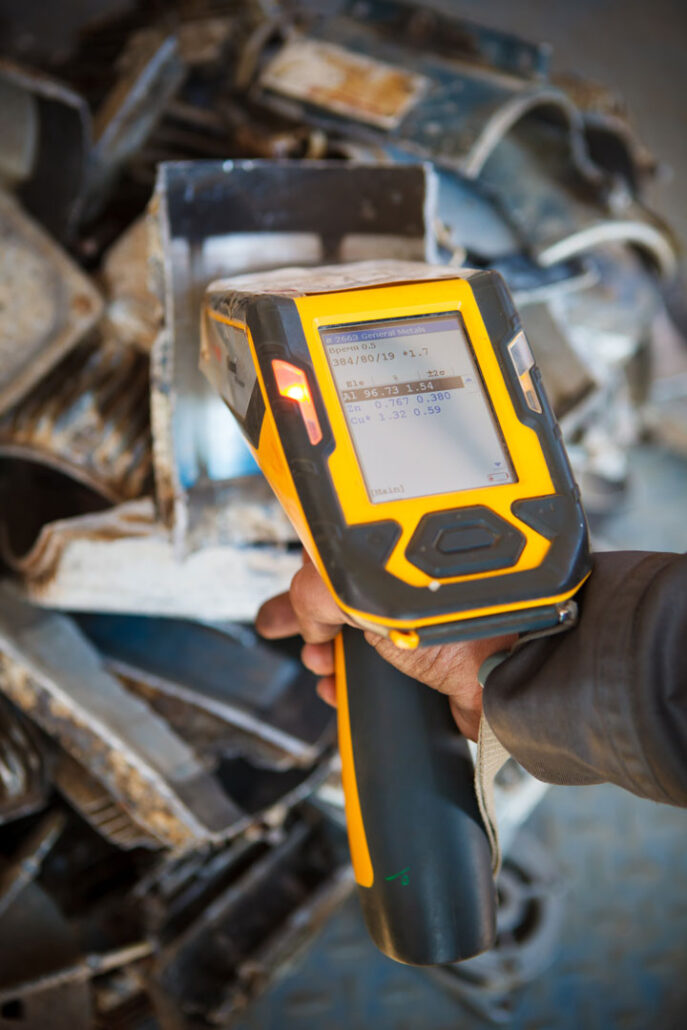
Buyer’s Guide: Factors to Consider When Choosing a Handheld XRF Analyzer
Durability and Build Quality:
When investing in any equipment, it’s crucial to consider its durability and build quality. Handheld XRF analyzers are meant for on-site analysis in various environments, so they need to withstand harsh conditions. Look for models with rugged designs and sturdy materials that withstand drops, impacts, and extreme weather.
User Interface and Ease of Use:
Handheld XRF analyzers are designed for use on-site, so they need to be user-friendly and easy to operate. Look for models with intuitive interfaces, clear display screens, and simple navigation options.
Battery Life and Power Management:
Since these devices are handheld, battery life is an important consideration. Look for models with long standby and working times to minimize interruptions and downtime.
Data Accuracy and Positive Material Identification:
Accuracy and precision are paramount in XRF analysis, particularly for positive material identification. Proper sample preparation is essential to ensure the measurements are consistent and reliable. Look for models with high accuracy levels, low detection limits, and advanced technology for precise results.
Additionally, performing quantitative analysis is crucial to ensure accurate measurements and provide specific concentration values of the analyzed elements.
Software Capabilities:
The software plays a crucial role in data management and analysis. Look for models that offer comprehensive software packages with features like data storage and export options, data visualization tools, and customizable reporting.
Portability and Weight:
When it comes to on-site use, it’s important to take into account portability and weight. Seek out models that are lightweight, compact, and effortlessly portable. These factors are vital for guaranteeing smooth and convenient transportation and use.
Cost:
Lastly, cost is an essential factor when considering any equipment purchase. While handheld XRF analyzers can be pricey investments, you must consider the features and capabilities you need and choose a model that offers the best value for your budget.
Manufacturer’s Reputation and Customer Support:
It’s always wise to research the manufacturer’s reputation and customer support services before purchasing. Look for companies with a good track record, positive customer reviews, and reliable technical support and warranty options.
Additional Features and Capabilities:
When considering your specific requirements, take into account the availability of additional features and capabilities. These may include built-in safety measures, cameras, various connectivity options (such as USB, Bluetooth, and GPS), and compatibility with different sample types. Ensuring these aspects align with your needs will enhance your overall experience and satisfaction. Sample preparation tools or features that assist in preparing materials for analysis can also be a valuable addition to ensure accurate results.
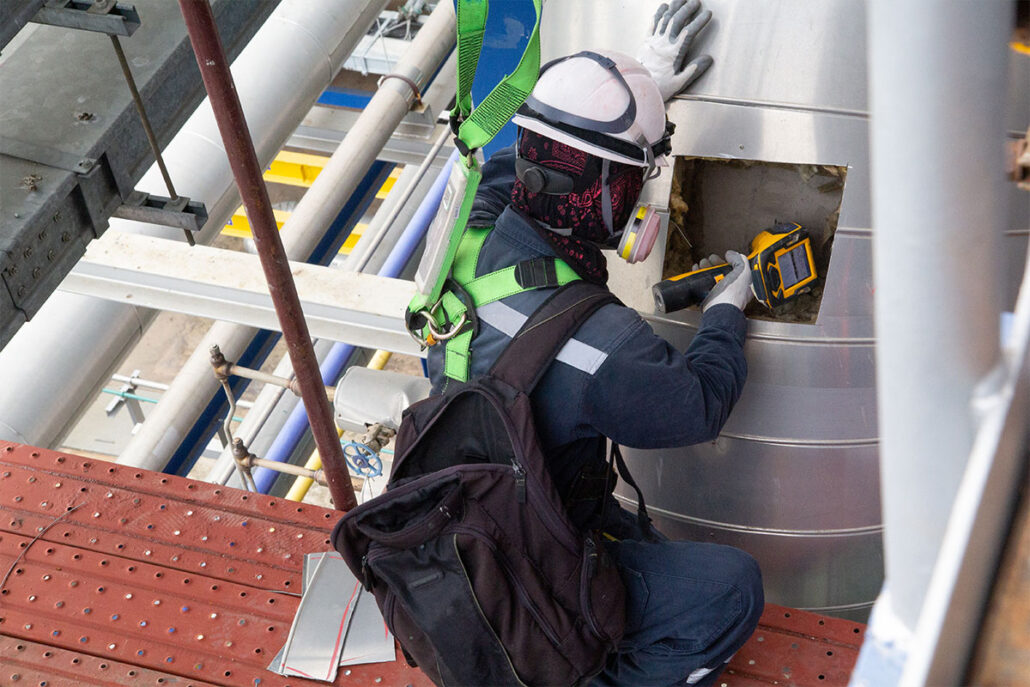
Frequently Asked Questions About Handheld XRF Analyzers
What elements can be detected by XRF?
Handheld XRF spectrometers can detect a wide range of elements, typically from Sodium (Na) to Uranium (U) on the periodic table. This encompasses almost the entire spectrum of naturally occurring elements, providing the scope for broad-spectrum elemental analysis.
How much does an XRF gun cost?
The price range of an X-ray fluorescence gun can significantly vary based on the brand, features, and capabilities it offers. However, typical handheld X-ray fluorescence analysis devices range in price from approximately $20,000 to $50,000.
While the initial costs might seem steep, the precision, speed, and convenience that these devices offer can provide significant value in the long run.
Is X-ray fluorescence radiation safe?
X-ray fluorescence radiation is generally considered low risk. Handheld XRF analyzers emit very low levels of X-ray fluorescence radiation, which have been deemed safe by regulatory bodies such as the International Commission on Radiological Protection (ICRP). However, following proper safety protocols and guidelines when using these devices is crucial to minimize potential risks.
Final Thoughts
Handheld XRF spectrometers are powerful and versatile tools that can revolutionize various industries’ material analysis, quality control, and safety measures.
When investing in an XRF gun, it’s important to carefully evaluate your needs and prioritize features and capabilities to ensure the best value for your money. With our comprehensive testing methodology and buyer’s guide, we hope to help you make an informed decision and find a suitable XRF analyzer for your needs.
At Trakkit, we are dedicated to providing accurate information and reliable reviews to help you stay ahead in the world of science and technology.
Stay tuned for more expert insights and reviews on cutting-edge equipment and tools.
